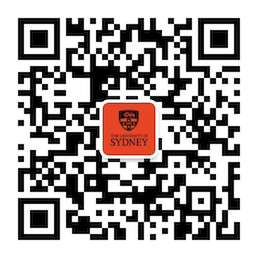A brief history of International House
International House through the years
In 1954 the Secretary of the Overseas Student Bureau, Margaret Briggs, prepared a report on the need for an International House at Sydney University. In 1955 the University of Sydney SRC (Student Representative Council) agreed to take on the responsibility for the campaign for an IH. It was hoped that an International House would assist both Australian and overseas students with quality accommodation and an academic environment for cultural exchange. In 1959 the University appointed Mr W Harold Maze MBE, then Deputy Principal, to the planning committee and he worked tirelessly to establish the House. His contribution was recognised in the W.H. Maze Building in 1985 .
The preliminary meeting of the Sydney International House Trustee Committee was held at the University of Sydney Union on 12th May 1959. Nominations from various bodies (embassies, individuals, societies, American Foundation) were called for the governing body.
The campaign moved to a new level with the entry of Rotary. Individual Rotarians had on several occasions talked of the need for an International House. As far back as 1956, the Rotary clubs of the 29th District (later designated District 275) began planning a District conference to be held in the Great Hall of Sydney University. The University of Sydney welcomed Rotary’s approach at the Conference to sponsor a hall of residence for foreign students. Fundraising proved to be hard going but Ian Hudson, who was District Governor at the time, urged the clubs in his District and the newly emerged District 268 to finish the task. Meanwhile the University of Sydney, irreversibly committed to its House, proceeded to work out how it would handle any shortfall in funding. Rotary’s fund-raising role was vital to the establishment of International House and individual Rotarians and particular clubs have continued to assist in relation to matters of governance through their membership of the Council, as well as through fund-raising and outreach programs.
The Board (Council) was to be appointed by the University Senate, consisting of 22 members drawn from the University and the community with one representative of Senate, three from Rotary and three International House residents.
In 1962 a TRUST DEED was drawn up to raise money by public subscription and establish a Fund for the purpose of erecting International Houses for the University of Sydney and the University of New South Wales. The underlying aim was to promote goodwill and understanding among the students who would be occupying these Houses from time to time.
The first meeting of the Provisional Board of Management was held in the Senate Room of the University on Thursday 20th February 1964 under the Chairmanship of General Sir John Northcott.
The first Director (Mr Graeme de Graaff) was appointed on 1st February 1965 and the Official Opening of the House (main building) was on 16th June 1967 for 125 residents (although some students had been in residence since the end of 1966).
Other buildings followed with the East Wing in 1972, Elkin Wing in 1979 and the Maze Units in 1985, allowing for a total population (including spouses and children) of about 225. A Log Cabin in the Belanglo State forest south of Berrima was built by residents and alumni in 1977. A brief photographic history of the building in its various stages is on display in the stairwell to the Rotunda.
Mr de Graaff retired in April 1987 and Mr Geoffrey Andrews became Director, a position he held until his retirement in May 1999. The third Director was Dr Ruth Shatford who retired in June 2002. The current Director is Ms Jessica Carroll.
Since 1967 over 6,000 residents have lived in the House, representing 100+ nationalities. About 40% of these residents have come from Australia, 45% have been undergraduates, 40%+ have been women and the average age of the residents has been in the mid-twenties.
While all International Houses are separate, independent institutions, they are united by one mission: to give students of different nationalities and cultures the opportunity to live and learn together in a community of mutual respect, understanding and international friendship. All International Houses offer people from every part of the globe the chance to learn more about one another and the world in which they live, while pursuing their own personal goals.
In a carefully nurtured environment, boundaries are crossed, cultural gaps are bridged and people of vastly divergent beliefs learn to accept differences in thought and tradition. In the International Houses, future leaders of the global community begin the process of international understanding that they will carry with them for the rest of their lives.






